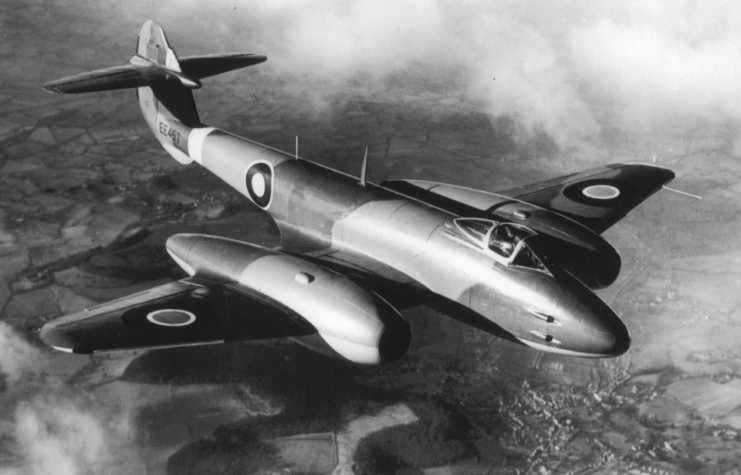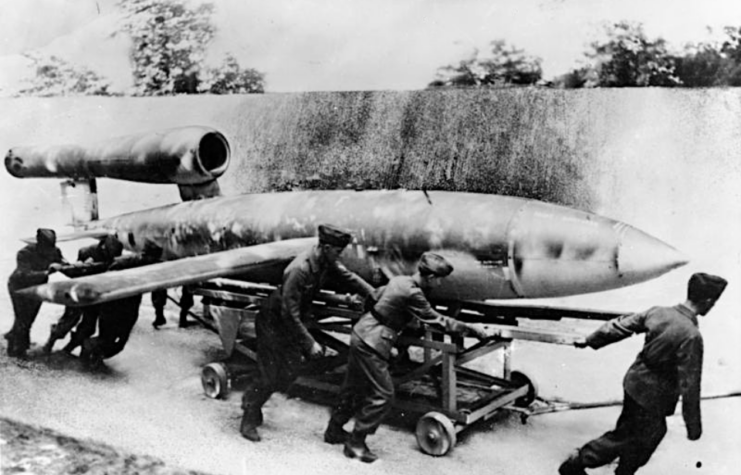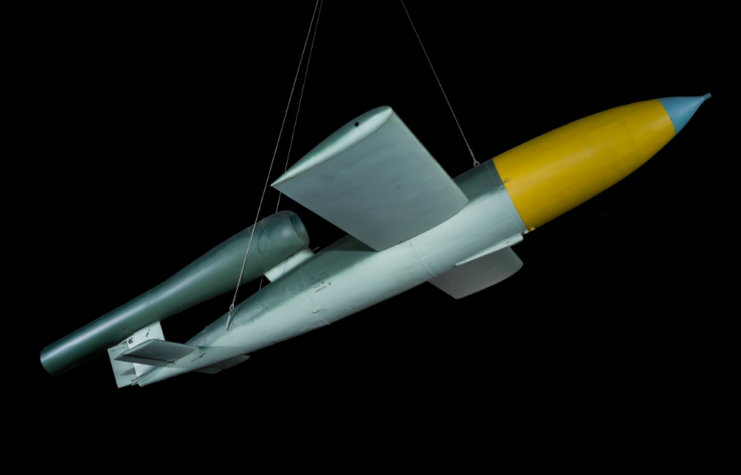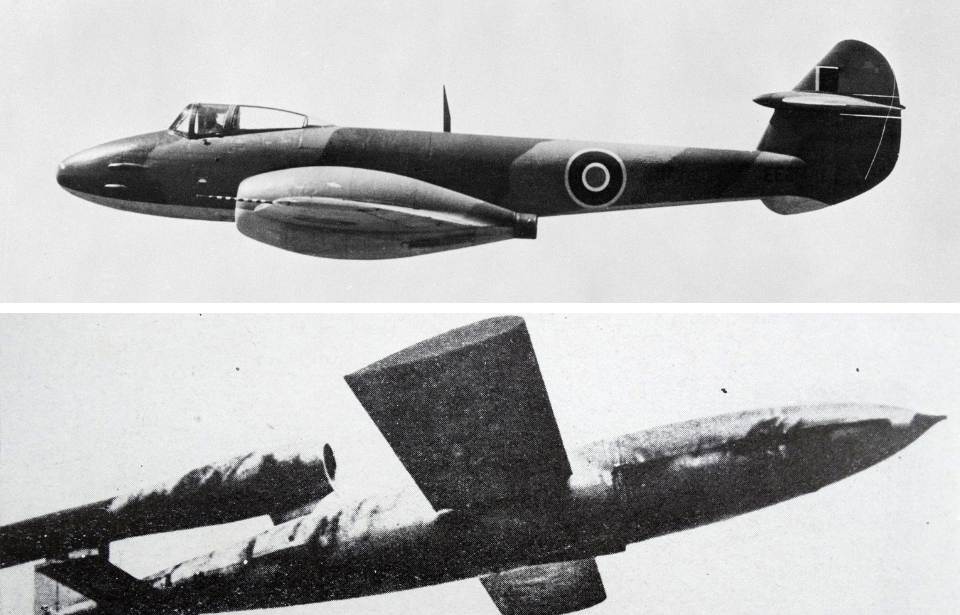The V-1 flying bomb was an early cruise missile developed by Germany as part of its V-weapons (Vergeltungswaffen) program. Starting on June 13, 1944, V-1s were launched against Britain, raining terror down on London and other cities. Flying faster than most Allied fighters, there was little that could be done to stop these incoming weapons.
The Gloster Meteor was the Royal Air Force’s (RAF) first jet fighter and the first Allied operational jet-powered aircraft. Being such a closely-guarded secret, it was retained for home defense, where it came up against the V-1 with tremendous success.
Gloster Meteor

Development of the Gloster Meteor began in 1940. However, the turbojet engine that powered the aircraft had been in the works since 1936. Frank Whittle had begun developing a jet engine and was looking for a manufacturer to build a fighter that could use it. In April 1939, he visited the Gloster Aircraft Company, who showed interest in his ideas.
Toward the end of 1939, the Air Ministry contracted Gloster to produce a prototype powered by a turbojet engine. The Gloster E.28/39 first flew in May 1941. Its success heightened interest in the concept, and further development was completed on an aircraft that utilized jet propulsion and had the ability to carry weapons. This resulted in the Gloster Meteor, which first flew in 1943 and entered service with No. 616 Squadron RAF the following year.
Two Rolls-Royce Welland turbojet engines powered the Gloster Meteor, each producing 1,700 pounds of thrust, which allowed the jet fighter to reach a maximum speed of 417 MPH at 9,800 feet and a range of 1,000 miles. The aircraft’s primary armament was four 20 mm Hispano MkV cannons. It could also carry two 1,000-pound bombs and up to 16 RP-3 or eight HVAR rockets.
The Gloster Meteor’s technology was closely guarded, and the aircraft was never sent to Europe for fear it might have fallen into enemy hands. Kept behind for home defense, it patrolled the skies over Britain, halting flying bomb attacks.
V-1 flying bomb

The V-1 flying bomb, known as the “buzz bomb” or “doodlebug,” was an early operational cruise missile. The first was launched toward London on June 13, 1944, with over 100 being sent out per day at one point, totaling 9,521 flying bombs before October 1944, when the Allies captured the final launch site in range of Britain.
The overall design of the V-1 had the appearance of a pointed torpedo, with two small straight wings and a pulsejet located above the main body, at the rear. An Argus As 109-014 Pulsejet powered the bomb, pulsing 50 times per second. This allowed the flying munition to reach 400 MPH between 2,000-3,000 feet. The engine produced a buzzing sound, hence the “buzz bomb” nickname.
The Amatol-39 – later Trialen – warhead contained 850 kg of Amatol, 52A+ high-grade blast-effective explosive and three fuses. The first detonated upon impact on either the nose or belly, the second when the bomb reached a certain penetration and the final on a two-hour delay after the V-1 was launched. The purpose of the delayed fuse was to ensure the bomb didn’t fall into the hands of the British.
Gloster Meteor versus V-1 flying bomb

An incoming V-1 flying bomb, at speeds of up to 400 MPH, was too fast for most Allied fighters to intercept – however, when the Gloster Meteor entered service, its turbojets bridged this gap, allowing for easier interception. On August 4, 1944, a month after the aircraft entered service, the aircraft scored its first two kills against the V-1.
Its first kill wasn’t scored as most would have assumed. Approaching the V-1, a Gloster Meteor pilot squeezed the trigger to fire his four cannons. Nothing happened; the guns had jammed. With the primary armament inoperable, the fighter used its speed to come alongside the flying bomb and tip it with its wing. This threw off the gyrocompass that the V-1 used to maintain level flight and crashed.
New! Want to become a trivia master? Sign up for our War History Fact of the Day newsletter!
More from us: Walter Holden Accidentally Took Off In a Fighter Jet – Despite Not Knowing How to Fly It
Outside of this event, Gloster Meteors usually used their guns against V-1s. Over the course of the Second World War, the aircraft downed 14 of the airborne munitions.
